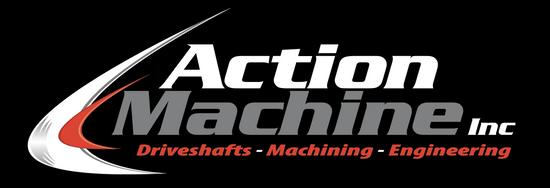Troubleshooting Guide
Troubleshooting Guide
| PROBLEM | POSSIBLE CAUSE | CORRECTIVE ACTION |
|---|---|---|
|
1. Fractured cross or trunnion or bearing cup.
|
A. Excessive running load.
B. Shock load.
C. Insufficient joint capacity.
D. Excessive running angle.
|
A, B, & C. Replace with higher
capacity driveshaft and U-joint.
D. Reduce U-joint angle.
|
|
2. Early life U-joint failure
|
A. Inadequate lubrication.
B. Seal failure.
C. Excessive running angle
and excessive speed.
D. Excessive running load.
|
A. Lubricate at minimum recommended intervals with recommended lubricant.
B. Replace U-joint.
C. Reduce running angle.
D. Replace with higher capacity
driveshaft and U-joint.
|
|
3. Galling of U-joint trunnion
end and bearing cup pad.
|
A. Excessive running angle
and excessive speed.
B. End to end fit too tight.
C. Inadequate lubrication.
|
A. Reduce U-joint angle.
B. Replace U-joint. If replacement kit is tight, check yoke alignment and lockup size: replace yoke.
C. Lubricate at minimum recommended intervals with recommended lubricant.
|
|
4. Brinnelling of bearing
surfaces.
|
A. Normal fatigue wear.
B. Excessive running angle and excessive speed.
C. Excessive running load.
D. Needle skewing.
E. Improper running angle.
F. Inadequate lubrication.
|
A. Replace U-joint.
B. Replace U-joint angle.
C. Replace with higher capacity driveshaft and U-joint.
D. Replace U-joint; check for yoke distortion.
E. Maintain minimum recommended running angle (typically 1°).
F. Lubricate at minimum recommended intervals with recommended lubricant.
|
|
5. Slip assembly seizes up.
|
A. Inadequate lubrication.
B. Seal failure.
|
A, B. Replace components.
Lubricate at minimum recommended intervals with recommended lubricant.
|
| 6. Slip assembly galling. |
A. Seal failure leading to
contamination.
B. Excessive running load.
C. Inadequate driveline design; length of spline engagement too short, normal running
condition with spline at pulley extended position.
|
A. Replace assembly.
B. Replace with higher capacity driveshaft and U-joint.
C. Increase length of spline engagement with longer splined stub. Review driveshaft length requirements and rebuild with
stub spline centered in yoke at normal running condition.
|
|
7. Stub shaft or tubing failure in
torsion.
|
A. Excessive running load.
B. Shock load.
C. Inadequate driveline design: tube size too small.
|
A, B, C. Replace with higher capacity driveshaft.
|
| 8. Failure at tube weld. |
A. Improper weld.
B. Excessive running load.
C. Balance weight welded too close to tube weld.
|
A, C. Replace tube.
B. Replace with higher capacity driveshaft.
|
|
9. Yoke ear failure.
|
A. Ear, contacted yoke ear of other yoke in assembly while running.
|
A. Reduce running angles; use
yoke with higher angle rating.
|
|
10. Yoke hub failure.
|
A. Excessive running load.
B. Excessive secondary couple loads.
|
A. Replace with higher capacity
driveshaft.
B. Reduce running angles.
|
|
11. Center support bearing
failure.
|
A. Seal failure.
B. Mated with an oversized
stub shaft
|
A, B. Replace with new components.
|
|
12. Center support rubber
cushion failure.
|
A. Misalignment.
B. Located too close to heat source.
|
A. Replace and align.
B. Shield from heat or move away
from heat source.
|
|
13. Driveline vibration.
|
A. Improper assembly.
B. Excessive or unequal running angles.
C. Defective U-joint.
D. Driveshaft out of straightness and balance specifications.
E. Worn slip assembly components.
F. Driveline length exceeds maximum for speed range.
|
A. Make sure all snap rings or bolts are fully seated or torqued properly.
B. Reduce and equalize running angles.
C, E. Replace with new components.
D. Straighten and balance.
F. Redesign using larger diameter
tubing or two piece driveline.
|
